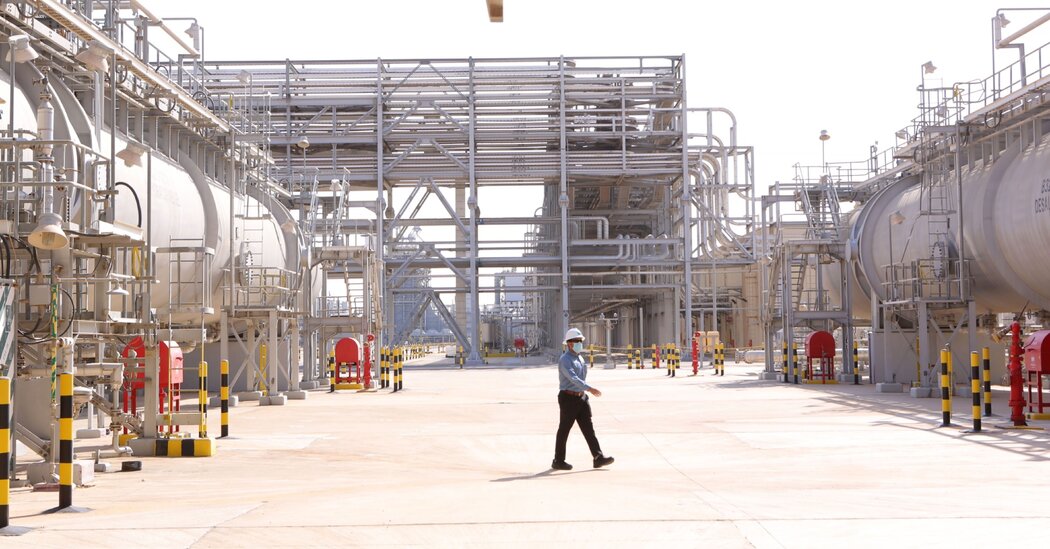What the Markets Are Telling Us About the Debt Ceiling
The headlines have been warning for weeks about a possible debt default by the United States. Negotiations have become contentious, with a deadline that could come as soon as June 1.
Because Treasury bonds are the linchpin of the world financial system — the “risk-free” asset on which everything else is based — the consequences of a U.S. debt default would be bad, maybe truly catastrophic.
But how likely is it that any of this will actually happen?
President Biden and Speaker Kevin McCarthy both say they understand that a default would be a disaster, but negotiations stalled on Friday and until legislation is enacted to lift the debt ceiling, the outcome is uncertain. And the markets are weighing the odds closely.
In a nutshell, they predict that a default most likely won’t happen, but they suggest nonetheless that a catastrophe is still all too possible, with the probabilities adjusting swiftly as the news shifts. If no final resolution is reached soon, the relative calm that has prevailed in the markets could rapidly unravel.
I noted last week that costs for insurance against a U.S. default have soared. While the impasse over the debt ceiling looms, the United States is seen in the $30 trillion market for credit default swaps as a riskier borrower than countries like Bulgaria, Croatia, Greece, Mexico and the Philippines. Compared with Germany, the cost of insuring U.S. debt is about 50 times more.
But as several readers pointed out, I didn’t say what the numbers tell us about how risky U.S. bonds have become. This is no trivial matter. So here’s a closer look.
What’s at Stake
As politicians talk in Washington about the possibility of a government breach of the debt ceiling, preparations are being made on Wall Street and in U.S. government agencies for a broad array of disturbing contingencies.
Even enumerating the possible effects of a default is disturbing. They could range from a containable event, consisting of a missed payment on a specific Treasury bill that affects a fairly small number of creditors, to something far more cataclysmic: the suspension of all Social Security checks and debt payments by the United States government, accompanied by a sudden meltdown of world markets and a recession.
As former Treasury Secretary Jacob Lew said last month in a Council on Foreign Relations meeting, “I think it’s pretty safe to say that if we were to default, it makes the odds of a recession almost certain.”
What Treasury Prices Tell Us
The pricing of short-term Treasury securities reveals that traders believe there is a reasonable possibility that the United States Treasury will miss a payment of interest or principal on securities that come due in early June. That’s when Treasury Secretary Janet L. Yellen says the United States is likely to exhaust all “extraordinary measures” that have kept government borrowing under the debt ceiling.
Concern about what might happen in the early days of June is the main reason for an anomaly in the yields of Treasury bills. Money market fund managers nervous about a possible default have been avoiding Treasury bills that come due then, lowering prices and pushing up yields to a level 0.6 percentage points higher than Treasury bills that mature in July. By August and September, the assumption is that some degree of normality will have returned, and factors like inflation and the Fed interest rate policy reclaim their customary dominance. Yields for bills that mature later in the summer and in early fall are higher than those in July. This barbell pattern is unusual.
It implies two things. First, the markets believe there is a real risk of a default in early June. Second, the possibility of a protracted failure of the United States to pay its bills is seen as extremely low.
That’s because the problem is fundamentally political, not financial.
The markets will supply the United States government with all the money it needs, if only Congress grants the authorization to borrow it. The Treasury market is the deepest and most liquid in the world. Demand for Treasuries is robust and is likely to remain so, as long as the credit of the United States is unimpaired.
But a U.S. debt default could change all of that, and another downgrading of U.S. debt, as was the case in 2011 when the United States came close to default, could increase U.S. borrowing costs.
Underlying the dispute is a basic reality: The country is spending far more money than it is bringing in, in taxes and other revenue. To pay its debts, the government needs to borrow regularly by issuing large volumes of Treasury securities. This implies a rising debt level.
It is a charged issue for many people, including former President Donald J. Trump, who ran enormous deficits during his own presidency but now advocates major spending cuts.
Republicans should insist on trillions of dollars in expenditure reductions now, Mr. Trump said last week during a live town hall hosted by CNN. If the White House doesn’t agree, he said, “you’re going to have to do a default.”
Mr. Biden has said that long-term fiscal questions should be dealt with separately from the debt ceiling, which is merely a formality. Speaker McCarthy insists that a final deal must include long-term spending cuts.
Most economists say that when borrowed money is used productively and borrowed at a reasonable rate, deficits need not be a problem. The details matter. But paying America’s debts promptly is essential if financial markets are to function properly.
What Credit Default Swaps Say
For the moment, the stock market and the broader bond market are treating the debt ceiling negotiations as a nonevent. Other issues dominate: persistent inflation, high interest rates, bank failures, the possibility of an imminent recession and of a pivot by the Federal Reserve, after tightening financial conditions for more than a year.
The debt ceiling impasse in the summer of 2011 was different. Then, stocks fell sharply.
There has been no similar stock market action so far, and that may be partly because the credit default swaps market views the current situation as less risky than the 2011 crisis.
Credit default swaps are a form of insurance. When the prices, or “spreads,” of these securities rise, they reflect the market’s view that the underlying bonds, in this case, Treasuries, have become more risky. These spreads can be used to derive precise predictions about a default,
At the worst point back in 2011, swaps pricing implied a 6.9 percent probability of a U.S. debt default, according to Andy Sparks, managing director and head of portfolio management research at MSCI, the financial services company. This year, the most dire prediction from the swaps market came around May 11, when Mr. Trump made his comments. The default probability reached 4.2 percent then. Before the news of a snag in negotiations on Friday, it hovered around 3.6 percent.
That’s a huge increase since January, when the default probability was near zero. But while the swap spreads are now much wider for Treasuries than they were in 2011, savvy market participants know that in calculating implied default probabilities, another important factor counts, too: the price of the underlying bonds.
This is frequently misunderstood, as Mr. Sparks explained. “It’s important to realize that the spread is only one part of the probability calculation,” he said.
This is wonky, but important: Because of soaring inflation and rising yields, bond prices, which move in the opposite direction, are much lower than comparable duration bonds were in 2011. With today’s lower prices, the default probability is lower than it was in 2011, even though the swap spreads are wider.
In short, the credit default swaps market says that investors should worry about a default — but probably don’t need to worry too much, at least not quite yet.
A Prediction Market’s Forecast
A simpler and smaller market has been giving a higher probability of a default, of about 10 percent. This is the Kalshi prediction market. Tarek Mansour, a founder of Kalshi, told me that his market reflected “the views of Main Street, not just Wall Street, which is all you get from the credit default swaps market.”
Kalshi puts forth a simple question: Will the United States default on its debt by the end of the calendar year? For a small fee, anyone can place a bet on this “event contract.” Kalshi has a good record on predictions of inflation and interest rates, and I find its data interesting, though not the last word.
What’s the real probability of a U.S. debt default? Given recent history, I’d say simply that while the chance of a major disaster is fairly small, it is sizable enough to prepare for.
I’m keeping plenty of cash in safe places in case there’s a disruption, but I’m investing for the long haul. Certainly, don’t panic if the stock market falls sharply. That might even be a buying opportunity because stocks have always risen after previous debt ceiling scares.
With a little luck, there will be an agreement in Washington, and these concerns will become moot. Let’s hope that there is no need for a new chapter in the history of political dysfunction.


